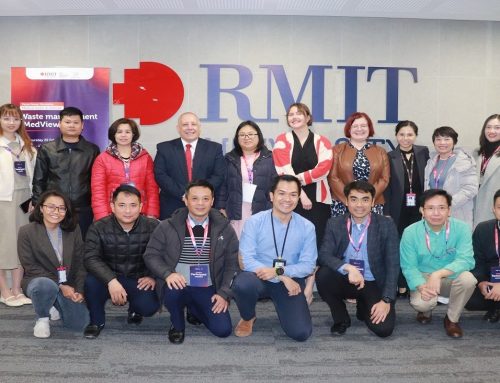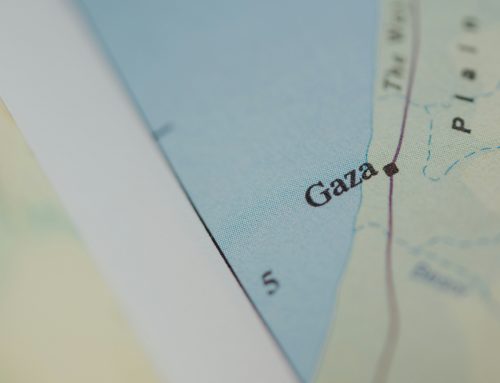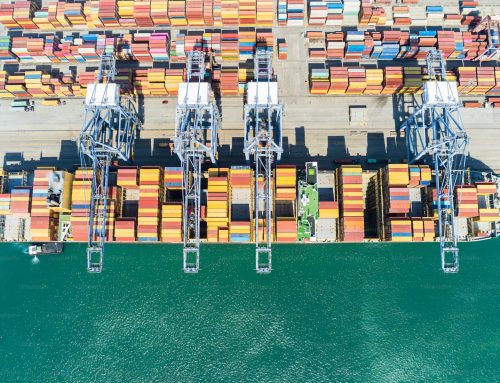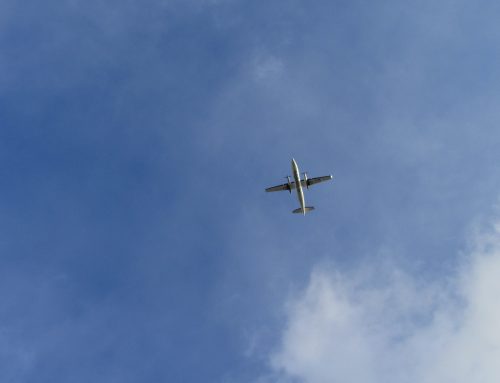10.06.2020
By Krichelle Medel, Winner of The HUMLOG Institute’s Best Thesis Award 2020
I am Krichelle Medel, this year’s winner of HUMLOG Best Thesis Award. I am an MPhil degree holder from the Institute for Manufacturing in the University of Cambridge under the programme of Industrial Systems, Manufacture and Management. Being an international student from the disaster-prone country of the Philippines, I realised that I was in a great position to study resilience within disaster management supply networks with the guidance of subject matter experts from the University of Cambridge. I was motivated to study this topic not only with the goal of contributing something new to academic literature, but also of providing new insights that can be applied by humanitarian actors in my home country as well as in other developing countries. However nerve-wracking, it is immensely fulfilling to have finished a thesis of this quality. The process of writing this thesis involved traveling 6000 miles to the Philippines, and the participation of organisations leading Philippine disaster operations from the private, public and humanitarian sectors. Being awarded as HUMLOG’s Best Thesis for 2020 was something I honestly did not expect but was indeed a very pleasant surprise. I take pride and honour from this recognition and will use it as an inspiration to continue forwarding socially relevant initiatives and studies. I hope you find time to read my blog entry below and can take some new insights with you.
The increase in the frequency in disaster occurrence has pushed humanitarian actors and government agencies to create a more responsive disaster management system. Humanitarian actors and government agencies are the main players at the forefront of disaster management operations (DMOs). But what is the role of the private sector in disaster management operations which are equally affected by such calamities?
The local government (public sector) is usually expected to lead disaster management for regions within their jurisdiction. While this is the case, it is important to recognise that the task to rebuild the communities cannot solely rely on the government’s efforts. In many cases, especially in developing countries, the government’s capacity is not enough to address the concerns of all the lives affected by a disaster. Different humanitarian organisations aid through donation of relief goods, medical support, and assistance for community rehabilitation. Beyond these, critical support and resources such as transportation, infrastructure, electric and communication systems also play important roles in the disaster management supply network. For a developing country like the Philippines, most of these resources are owned by private corporations. Academic literature in the realm of humanitarian logistics usually recognises the role of the private sector as philanthropical in nature, where they usually provide goods and financial assistance to beneficiaries or become procurement partners of humanitarian actors. Such roles, while very much appreciated, most often only affect the short-term response to disasters. Having control on many critical resources, indeed the private sector can be better involved, or rather, ingrained in resilient disaster management supply networks.
My dissertation answered the research question: “How can resilience be built within DMSN through cross-sector collaborations?”. The dissertation analysed resilience building within disaster management supply networks (DMSNs) enabled by cross-sector collaboration, focusing on the role of the private sector. From past literature, DMSN resilience criteria were identified to be robustness, flexibility, velocity and visibility. Robustness pertains to how a supply chain can resist disruption from disasters. Flexibility is the ability of the supply chain to quickly reconfigure itself to minimise disruption. Velocity pertains to how fast the resources flow from the suppliers to beneficiaries. Lastly, visibility is how transparent critical information is available to all stakeholders. As another layer of analysis, DMSN capabilities as outcomes of collaboration activities were identified and associated with these resilience criteria. All these elements were built into the resulting DMSN Collaboration-Resilience Model which was applied to a case study of the Philippine DMSN. Existing cross-sector collaboration activities were identified within the Philippine disaster management operations. A causal analysis of each collaboration activity and its outcome is done to identify relationships between collaboration types and resilience constructs. Based on these results, patterns were identified and dependencies between collaboration and resilience are defined. Collective DMSN resilience (DMSNRES) enabled by existing cross-sector collaboration activities is evaluated against a future disaster scenario to identify resilience gaps. These gaps were used to identify new cross-sector collaboration opportunities, illustrating the continuous process of resilience building.
The dissertation ultimately found that cross-sector collaboration builds resilience in DMSNs through capacity building, sourcing redundancy, information reliability, and logistics responsiveness. From literature, private sector collaboration operates within short-term donations in the form of money, logistics (e.g. lending of transportation assets), and procurement partnerships. This research provided new insights on how private sector can be involved within a DMO through collaboration with the government and other NGOs. It augments existing literature on private sector involvement in DMOs where common perception is that the sector is only involved in short-term response and recovery activities. This study found that the private sector can be operationally involved not just in post-disaster activities, but also in mitigation and preparation phases as well. This then sets a new baseline for further research on private sector involvement within DMOs. As this study provided a novel framework to analyse collaboration activities and its impact to DMSN resilience, future work could be done by applying the model to further cases such as other countries’ DMSNs, or to more specific contexts such as inter-organisational collaborations rather than big sectors. A more detailed assessment method against a future disaster will prove relevance for the model in providing practical insights on how resilience can be built in DMSNs.
With disasters becoming more complex and frequent by the day, the need for every sector of the society to contribute to disaster risk reduction is continuously intensified. While this research was done in the context of natural disasters, I feel strongly about the immense need for stronger cross-sector collaboration now more than ever, that a pandemic is affecting the lives of almost everyone around the world. I have seen the private sector step up in a way that we probably have seldomly seen before. I’ve seen companies converting their manufacturing lines from gin to ethyl alcohol production, as well as converting manufacturing lines for hygiene products into face mask production facilities. Beyond manufacturing companies’ own supply chain flexibility to adapt to the needs of the society, other companies focusing on services provided support for the needs of the medical front-liners such as hotels and dormitories providing board and lodging for our modern-day heroes. With the suspension of public transportation, many bus companies also stepped up to provide shuttle services to healthcare workers as well as the ordinary people that are part of their companies’ skeletal workforces. Several corporations are now also coming together to launch enterprise recovery programs for small to medium enterprises (SMEs). These are just few of the many stories of the society coming together in the fight against COVID-19. Each sector of the society can take part in disaster management operations to reduce unpredictability, lives impacted, and increase speed of response and recovery. Each sector of the society can be of great contribution not only during post-disaster response and recovery, but also during – disaster mitigation and preparedness phase. As such, this research echoes the call for everyone – public, humanitarian, private and the academic sectors to be more involved in strengthening our communities.
Access to the thesis here.
To know more about the award, click here.




